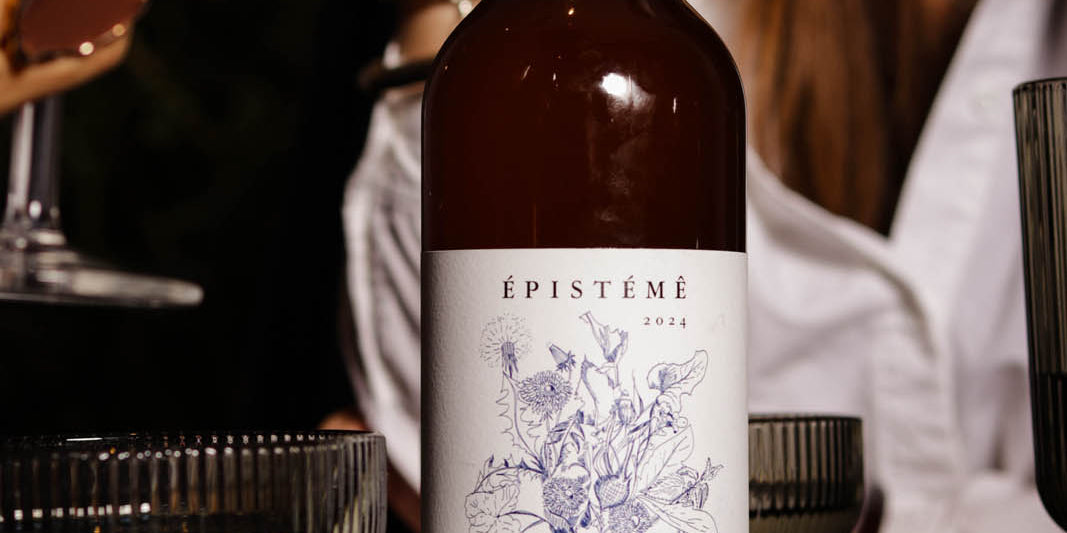Beer is a product that the average consumer in France today is unable to equate with the terroir. Yet, our country has always been a massive producer of beer and its raw materials. So how could we have distanced beer so much from the notion of terroir? What can a terroir beer be today?
First of all, terroir has a strong geographical connotation and refers to everything that can originate from a given territory, to the products that are naturally or traditionally present there. We thus naturally associate taste with it: we very often associate flavors with geographical areas, just as spices remind us of their regions of origin or wine markers remind us of their terroirs. And even if the sourcing of raw materials is no longer as obvious and segmented as it was before the Industrial Revolutions, we still have reference regions for almost every product.

© Photography Pillet Frédéric - Hauts-de-France Region - General Inventory
However, this is a problem for certain products. Beer is one of those products that is difficult to associate with a region. If you ask random people, they will probably attribute beer to Germany, Eastern Europe, Belgium, the United Kingdom… And without knowing why. Now, serve them a Heineken, a Corona, or a Budweiser, and they will no longer understand the meaning of your question.
However, in France we are witnessing a revival of craft brewing with no fewer than 2,300 breweries throughout the country, a meteoric rise over the last ten years that has propelled us to first place in Europe in terms of the number of breweries. This clearly demonstrates the global desire to restore beer to its former glory and, why not, to place it in the terroir.
Thus, terroir beer is targeted by many breweries in France and elsewhere, even though the term is rarely used for fear of offending or having to get bogged down in stammering explanations. Except, of course, when a wine producer like Armand Heitz starts making beer, it then becomes crucial to make beer and terroir rhyme.

Before asking what a local beer is and citing some examples, we must first understand what is absolutely not a question of local produce but rather a lack of coherence that is increasingly unacceptable in view of the circumstances of our time.
Two major types of beer run completely counter to this notion: the first is standardized beer, industrialized on a large scale. They are not at all a process in accordance with natural dogmas but rather a productivist logic where advanced chemistry and mechanization have intertwined in order to produce more all year round in disregard of natural cycles and a fair balance between supply and demand. This causes ecological scandals of waste disposal, wastewater, and a monopolization of sources of raw materials and especially water as was the case throughout the 20th century in Alsace. And I am not even mentioning the final quality of the product which is soulless, devoid of taste interest and often resweetened with glucose-fructose to make the consumer addicted (a little nod to industrial "abbey" and "Belgian tradition" beers).
The second is beer that borrows codes from other terroirs without any logic of proximity. The big trend for juicy IPAs, heavily loaded with hops imported from the United States, Australia, or New Zealand, is the perfect example. Inherited from the craft movement and having greatly appealed to consumers, these styles are over-represented worldwide but are 100% dependent on hop imports and imply that the preferred style of many consumers has a carbon footprint far greater than any other style of beer.
With these two counterexamples behind us, there are still many examples of terroir in beer. First, through water, the largely dominant and oh-so-important ingredient in the brewing process. Indeed, regions rich in diverse and atypical sources will provide particular waters that breweries can enhance if they feel like it. Simon Lecomte's Ammonite brewery is a good example of this philosophy, which encourages starting with water and then working with adapted styles, rather than modifying the water according to the styles you want to create.

Then, of course, all the other raw materials must be sourced and identifiable in order to fit into a defined terroir: the cereals used, the hops, the fruits or other inputs, the potential barrels used and finally the yeast. The latter is today the subject of major claims in the trend to speak of terroir beer. This comes mainly from lambic, this style brewed exclusively in the Pajottenland valley in Belgium based on two-thirds malted barley and one-third raw wheat as well as over-aged hops. Its particularity lies in its fermentation from wild yeasts and in particular from the famous Brettanomyces bruxellensis (or lambicus). This typicality resulting from a six-century-old tradition propels it to the status of "terroir beer" of excellence.
Terroir and its use ultimately stem from a philosophy and a simple, logical, coherent, and inherent thought process. It departs from classic market logic and starts with what we have under our feet, around us, in the air. Now, many breweries are returning to this consistency after following the craft trend for a few years by copying American terroir. At the same time, however talented they may be at brewing, no one wants to be fed exclusively American beers produced in France, just as no sane person would want to live exclusively on burgers.
Canadians, close neighbors of the Americans and their brewing culture, have understood this well and have seen breweries flourish throughout their territory, passionate about the land, capable of harvesting all the knowledge from all regions of the world and adapting it to their raw materials. It is this terroir that we must develop in beer, a new terroir dictated by our environment and the infinite know-how that humanity has acquired all around the globe in all fields of knowledge.
However, terroir is a key concept in oenology as well as in the domain and the beers of the Armand Heitz estate have this theme as their watchword in the form of two distinct ranges: one focused on local cereals and their specificities and the other on wine-beer hybrids enhanced by aging in ex-barrels of wines from the estate. But while it can be very interesting to draw inspiration from the sphere of wine for beer, it would be a shame to copy the oenological culture of the terroir to establish the legitimacy of the beer and this is all the work that artisan brewers who want to work the terroir have to accomplish: acquiring their own codes, adapting to their environment while keeping the personality of their product.
Gregory White
PS: To learn more about this subject, I refer you to Arthur Farina's superb conference at the Paris Beer Festival 2021
Thanks to Carol-Ann Cailly, founder of the Hoppy Hours blog, president of the Beer Drinkers association, and Arthur Farina, brewer at Le Soupir, for the inspiration.
Sources:
What is a lambic beer? (2021, May 24). Mon Petit Houblon .
The Pod'capsuleur (2022, March 11). Conference: Does craft beer have a terroir?
Wikipedia contributors. (2022, June 24). Dekkera bruxellensis.










